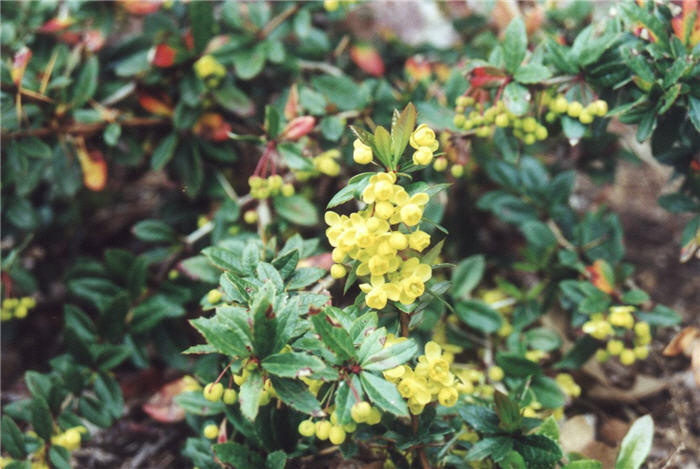| Botanical Name: Berberis x gladwynensis 'William Penn' | |
| Common Name: William Penn Barberry |

-
Anatomy
-
Culture
-
Design
Plant Type
Broadleaf Evergreen, Shrub
Height Range
3-6'
Flower Color
Yellow
Flower Season
Spring
Leaf Color
Green, Dark Green
Bark Color
Brown
Fruit Color
Red
Fruit Season
Winter, Fall, Persistent
Sun
Full, Half
Water
Medium, Extra in Summer
Growth Rate
Moderate
Soil Type
Sandy, Clay, Loam, Rocky, Unparticular
Soil Condition
Average, Rich, Poor, Well-drained, Dry
Soil pH
Neutral, Basic
Adverse Factors
Thorns/Spines
Design Styles
English Cottage, Formal, Japanese, Mediterranean, Ranch
Accenting Features
Unusual Foliage
Seasonal Interest
Winter, Fall
Location Uses
Background, Entry, Shrub Border, Foundation, Walls / Fences
Special Uses
Hedge, Fire Resistant, Small Spaces
Attracts Wildlife
Birds
Information by: Stephanie Duer
Photographer:
Photographer:
-
Description
-
Notes
'William Penn' is an evergreen barberry with a graceful, upright, arching form that grows about 4 feet tall and 4 to 6 feet wide. It has clusters of bright yellow spring flowers, which are followed by dark red, torpedo-shaped berries that persist into winter and are enjoyed by birds. Leaves are an elongated oval, with slightly toothed margins, and are a dark green. Add it to the shrub or foundation border, or mixed in with ornamental grasses for winter interest. There are some 'William Penn' planted at the Concord Lift Station on Concord Avenue and California Street.
Grow in well drained soil and full sun; will tolerate part shade, though the leaves will lose some color intensity. Tolerates a wide range of soil types, including dry soils; does not tolerate wet soils. See guide for planting instructions. Barberry does not fair well when sheared, but selective pruning in late winter can maintain a nice form and convenient size. See guide for pruning tips.